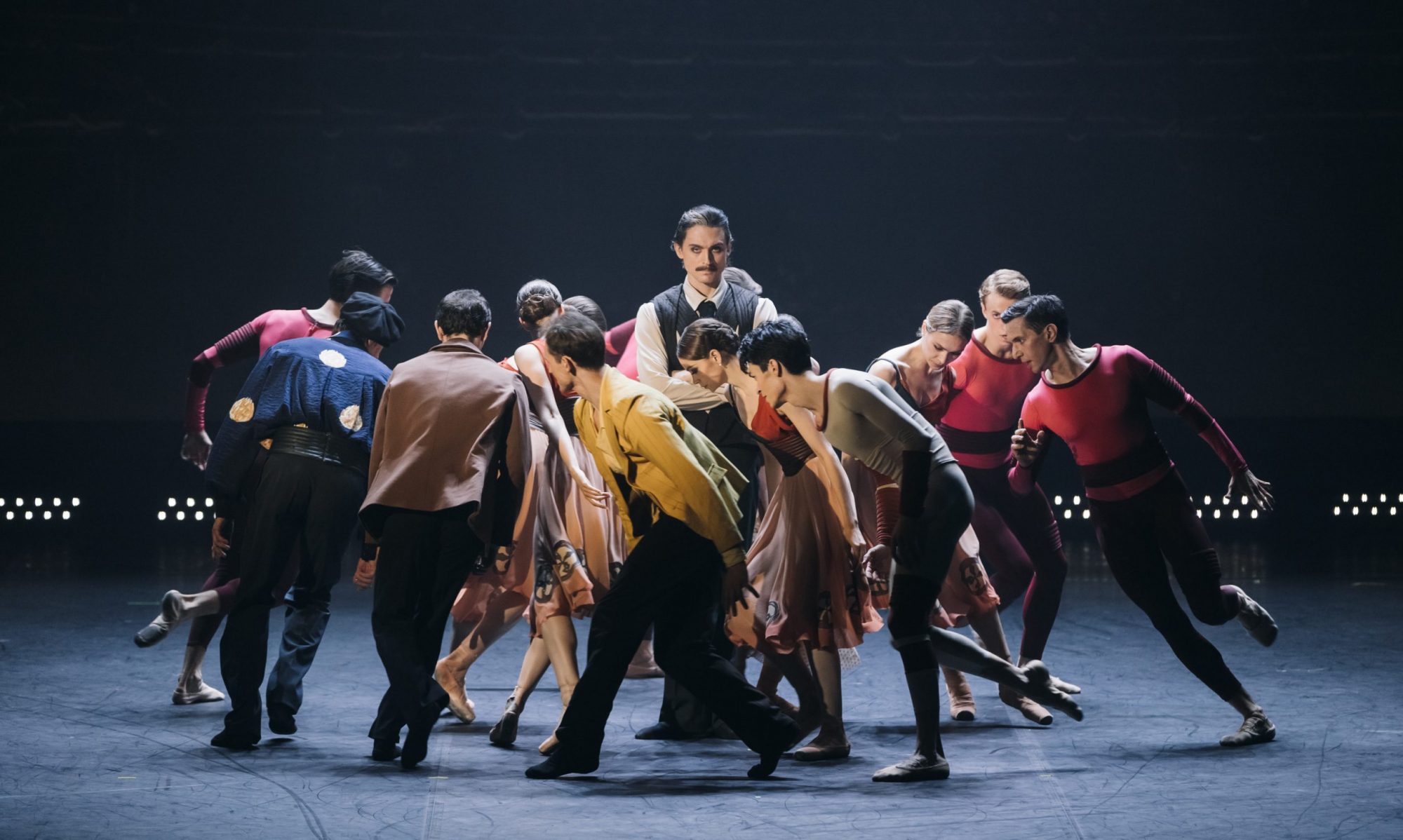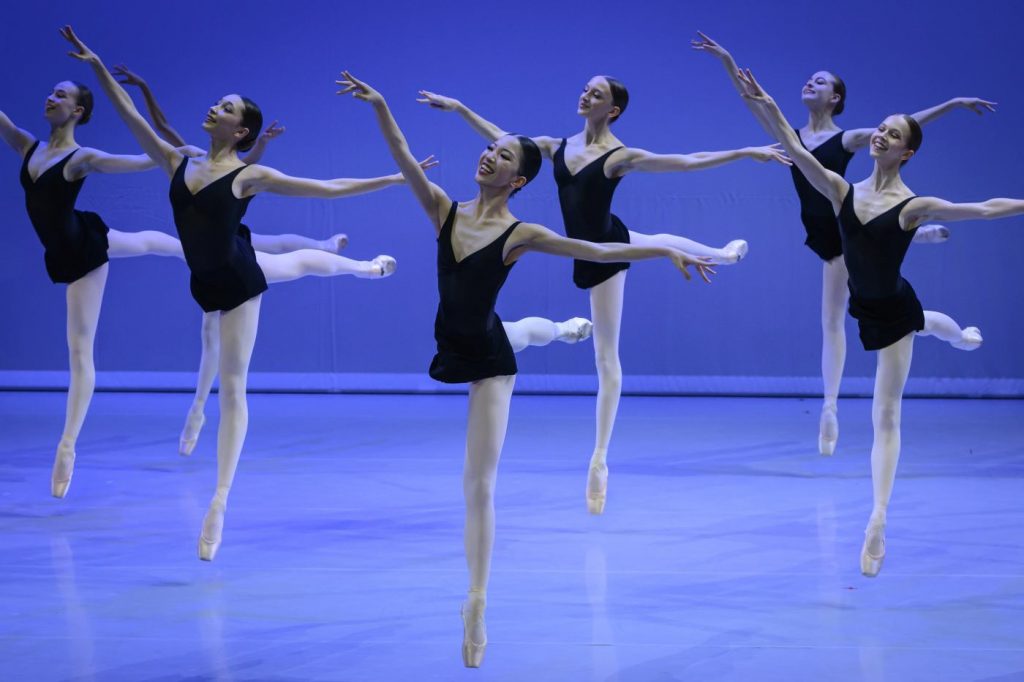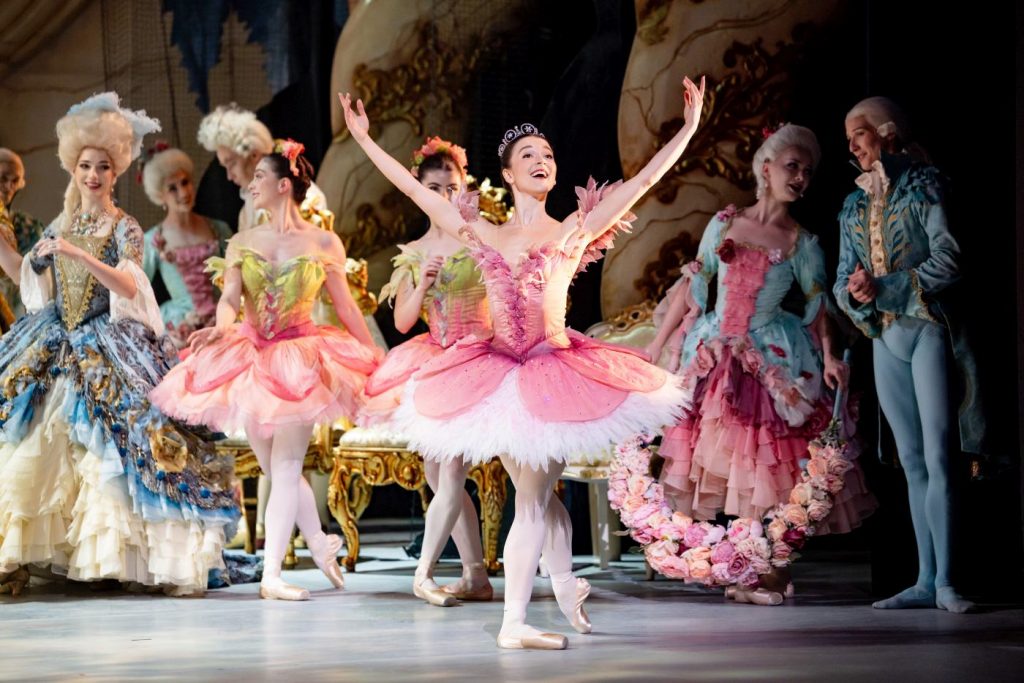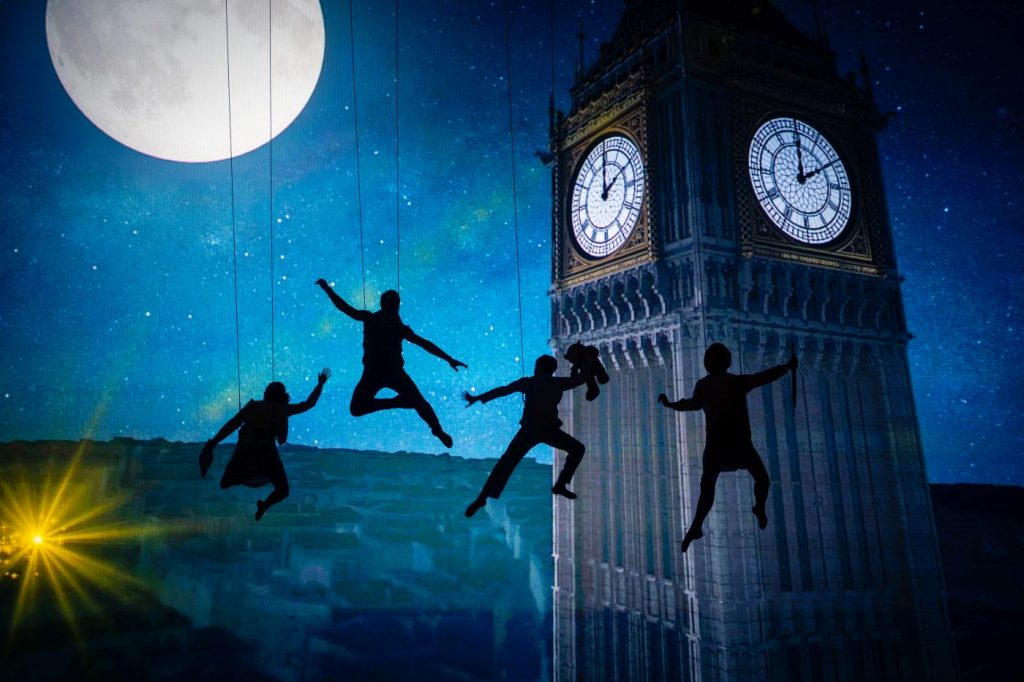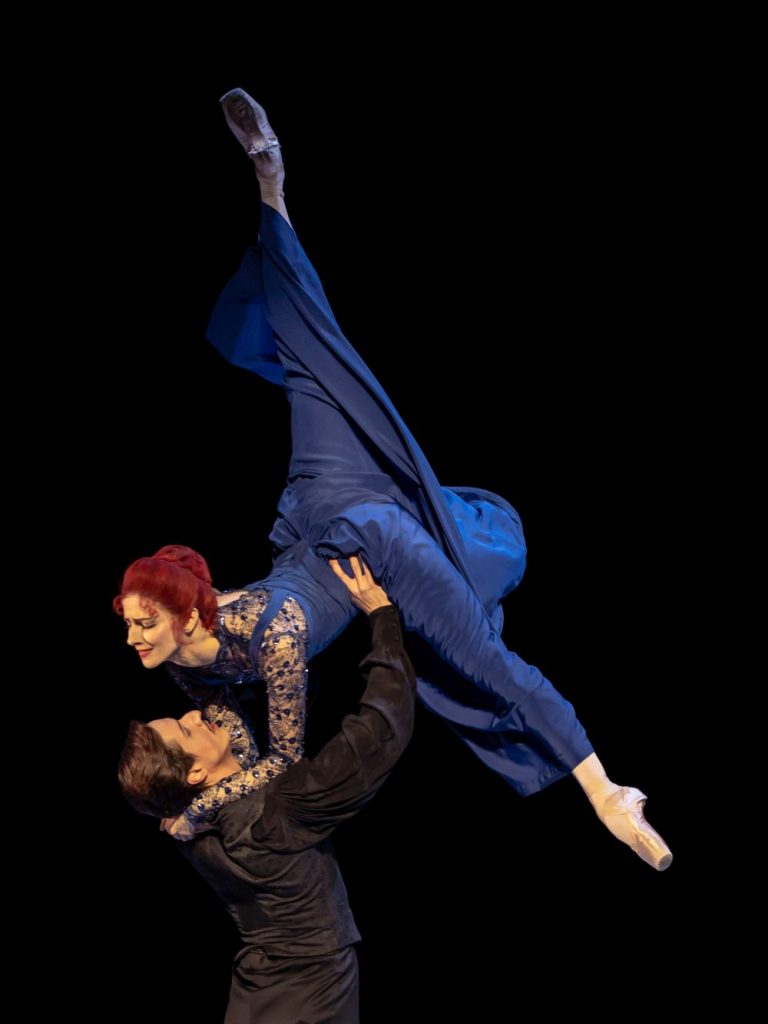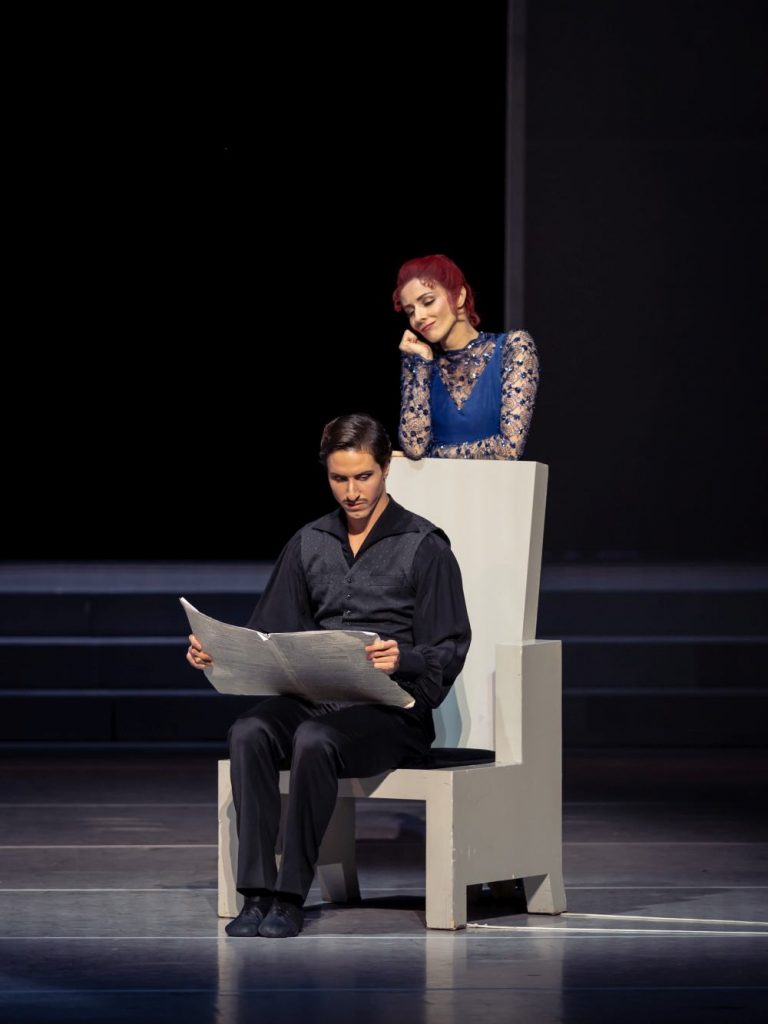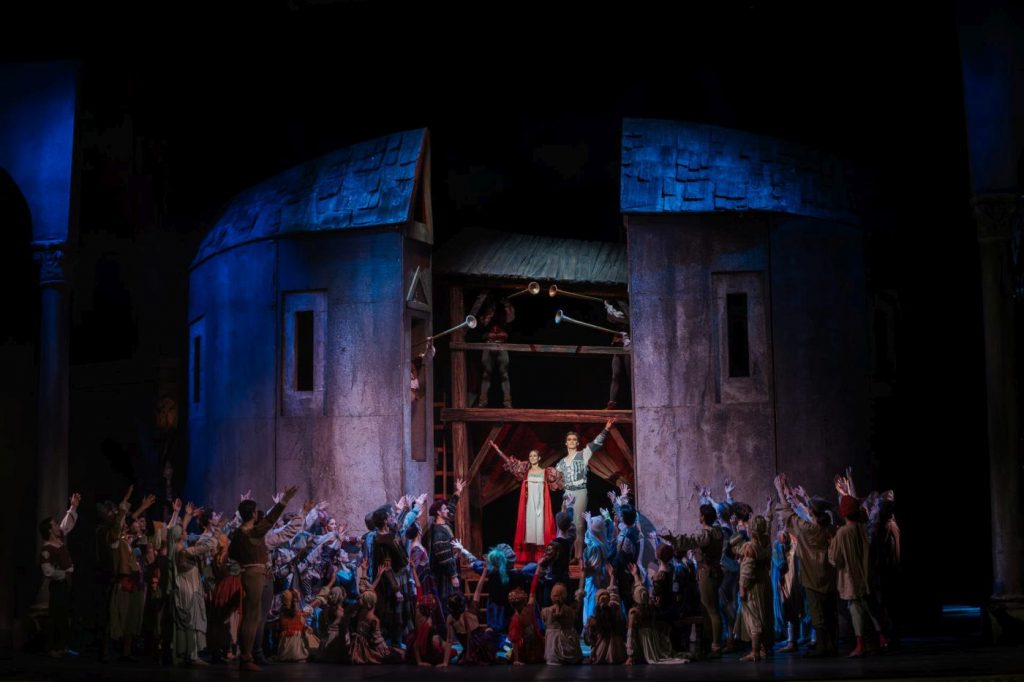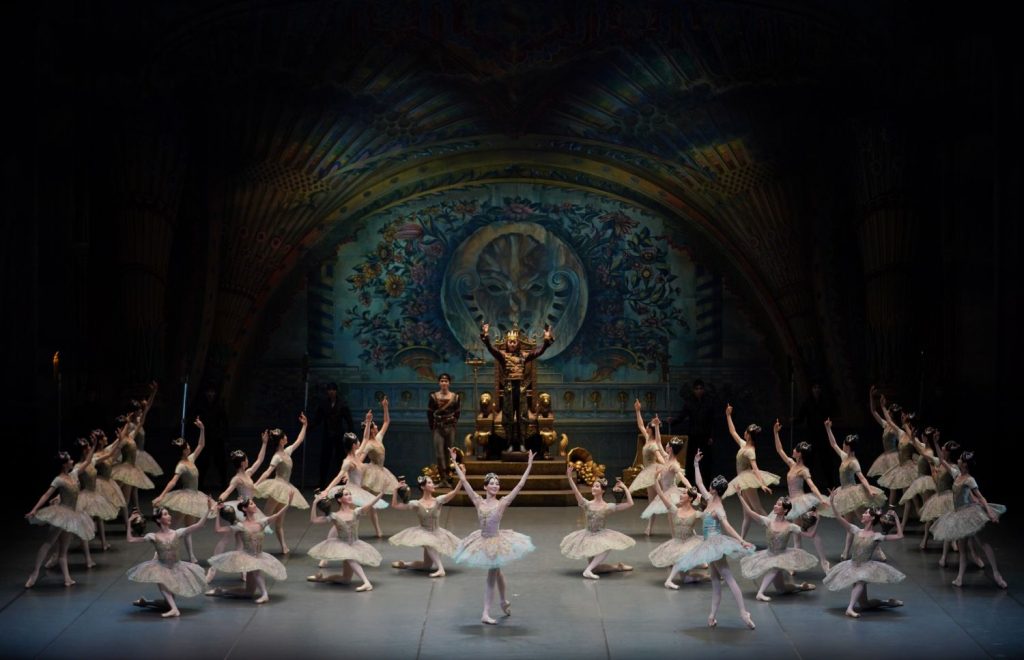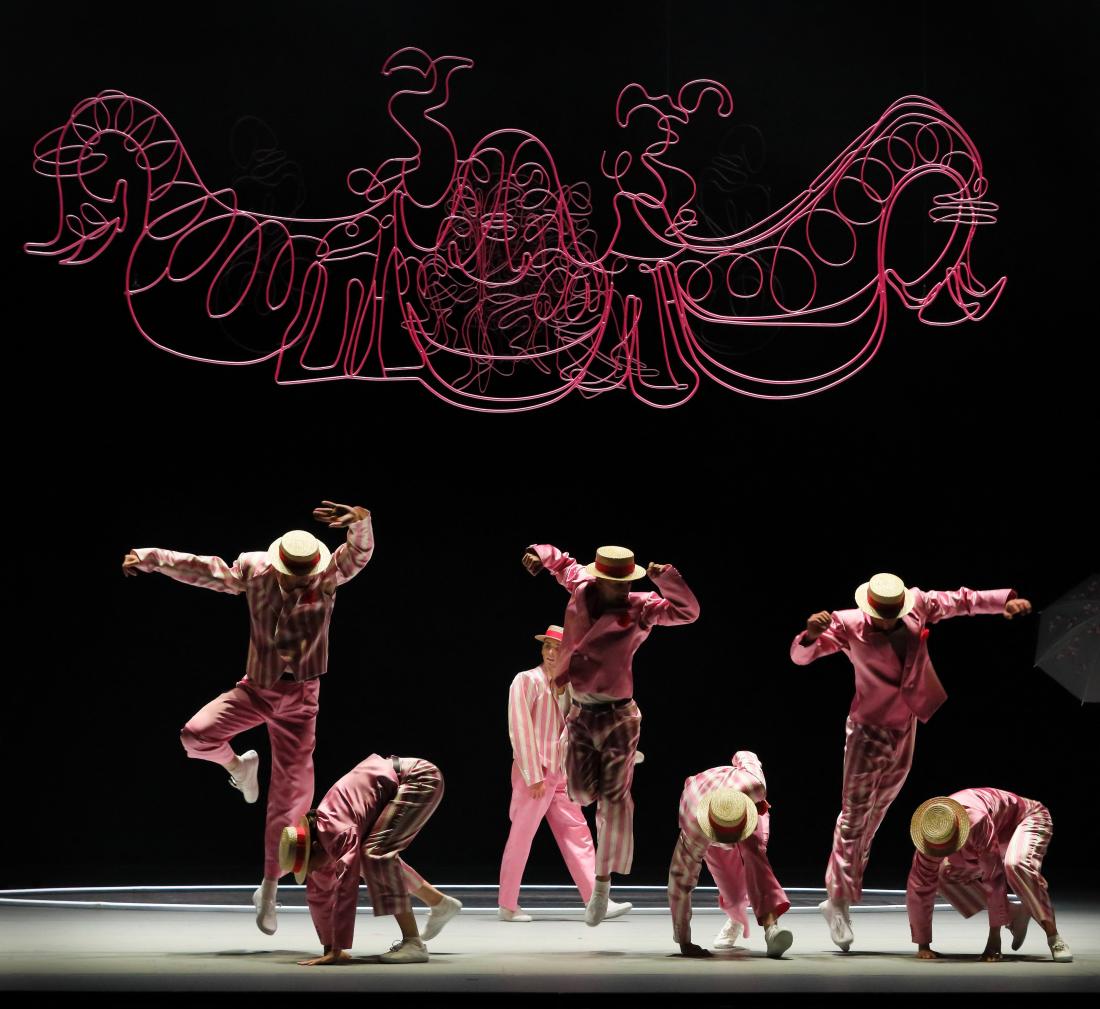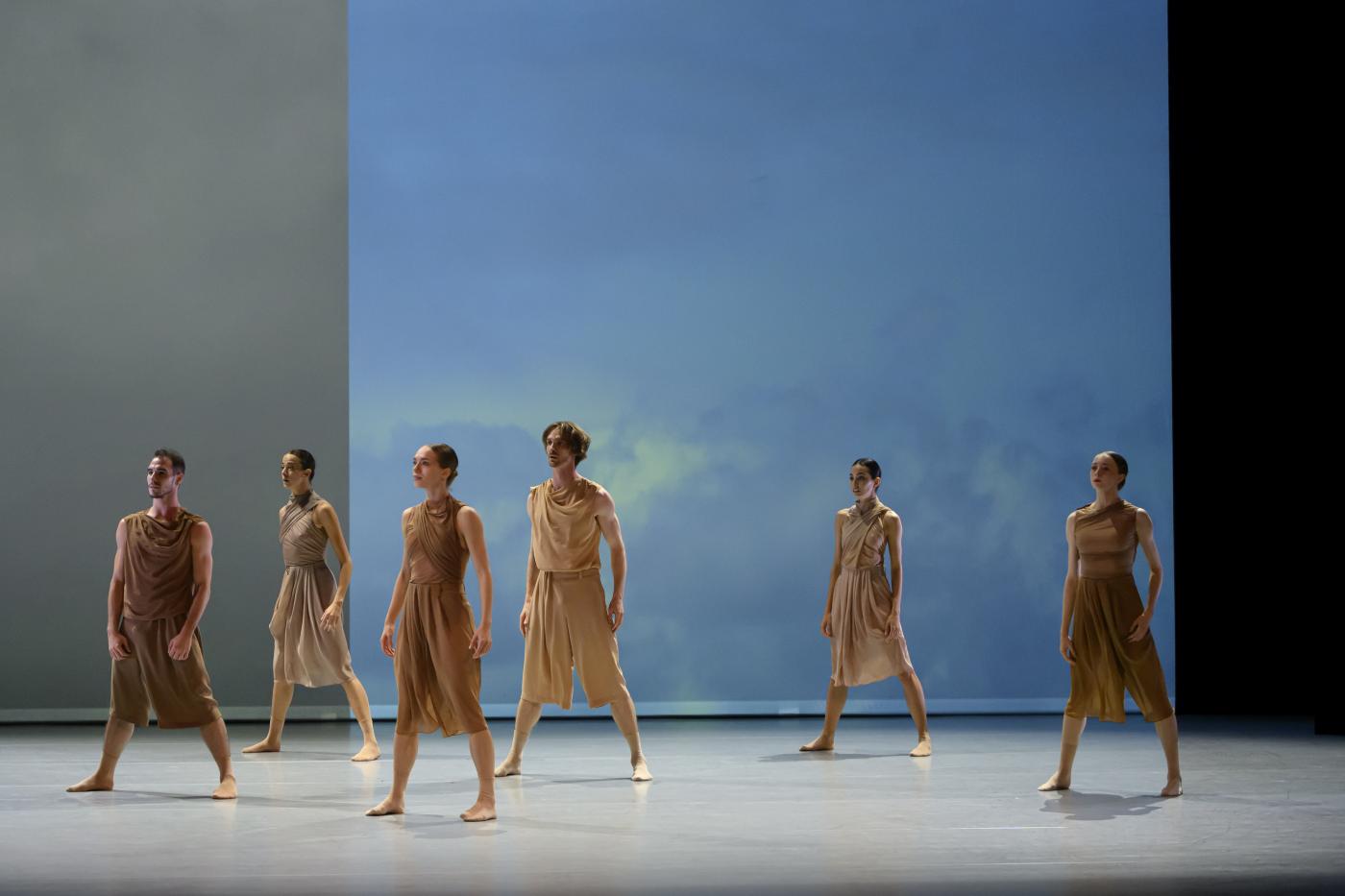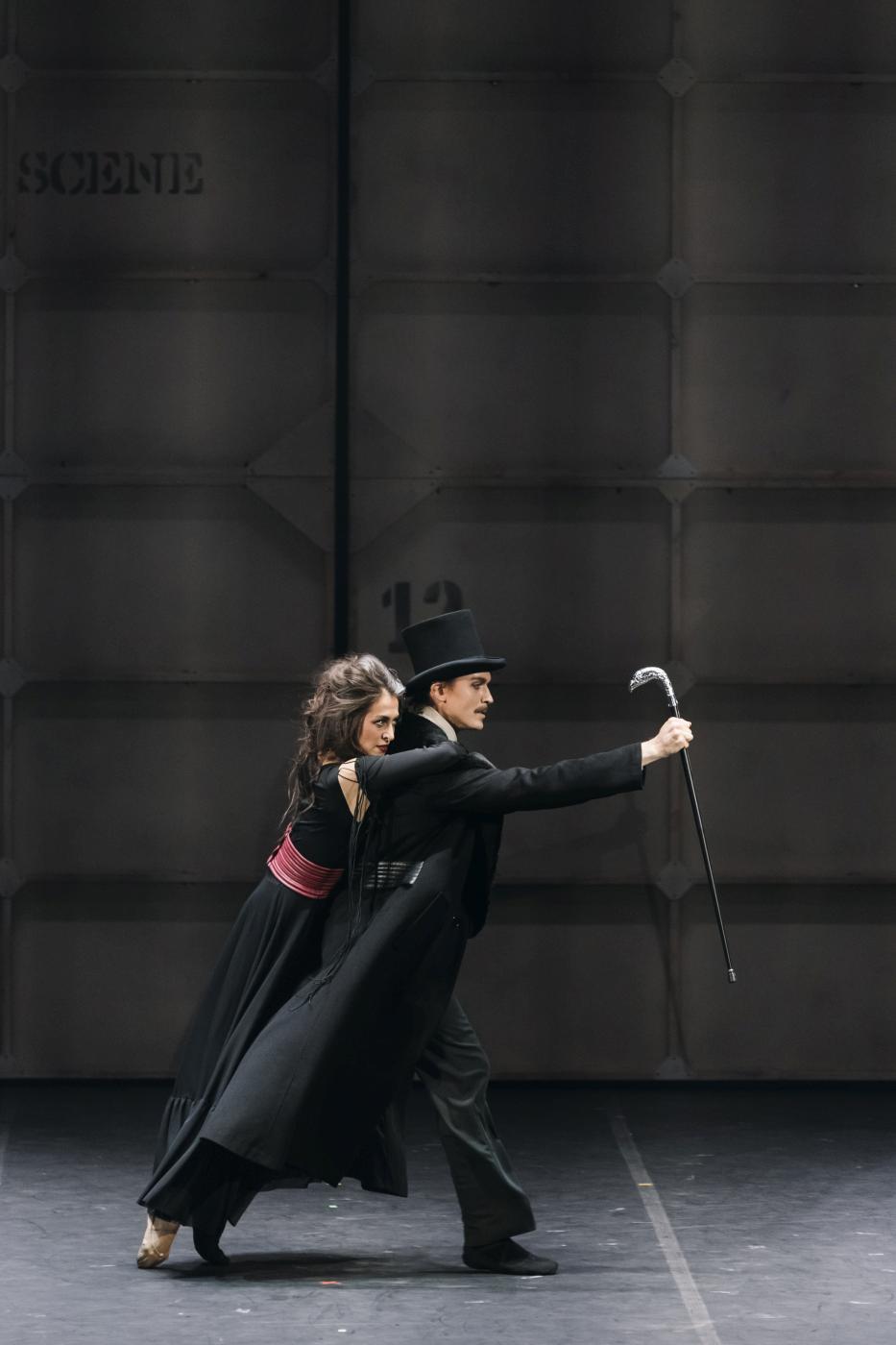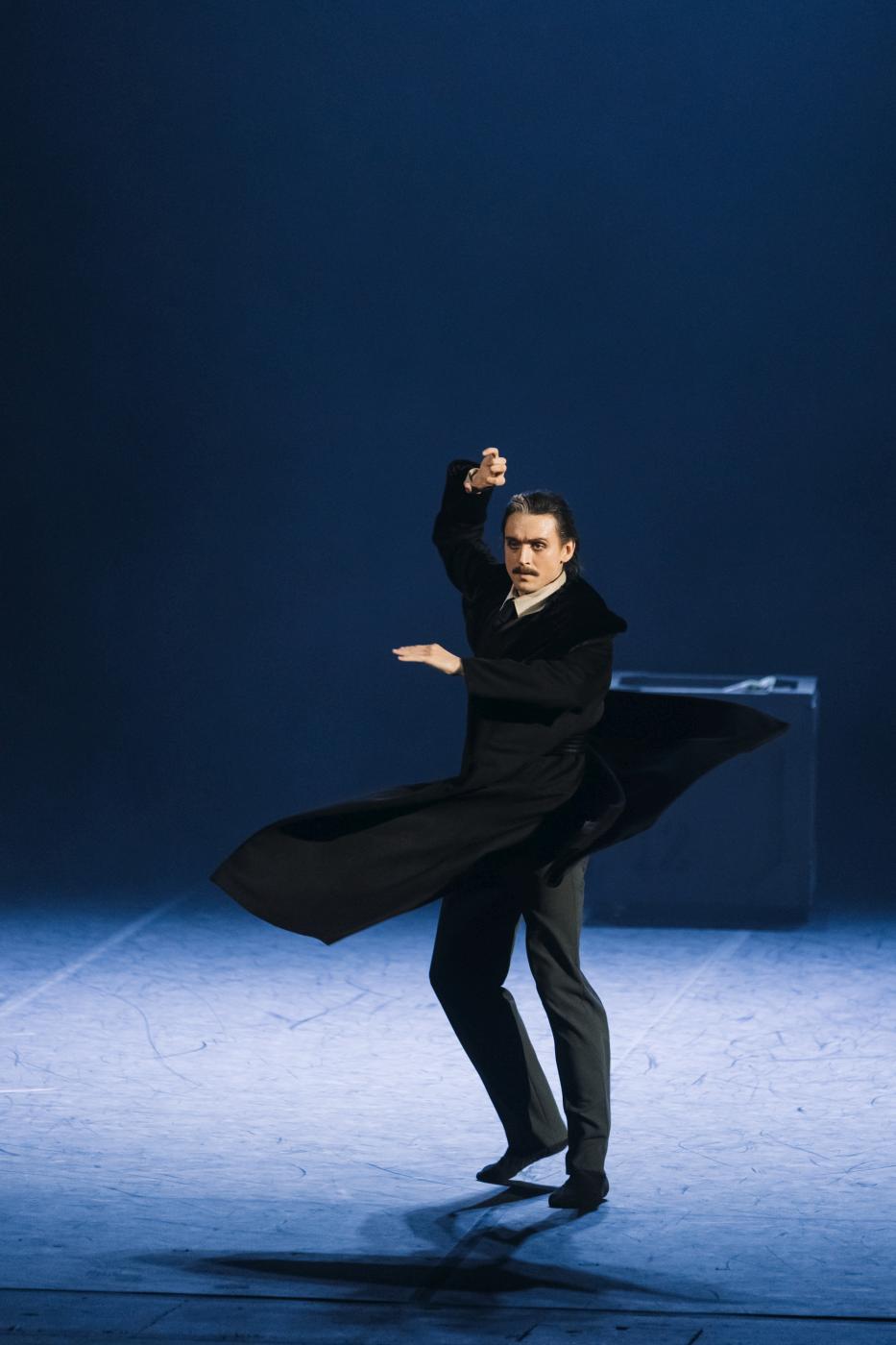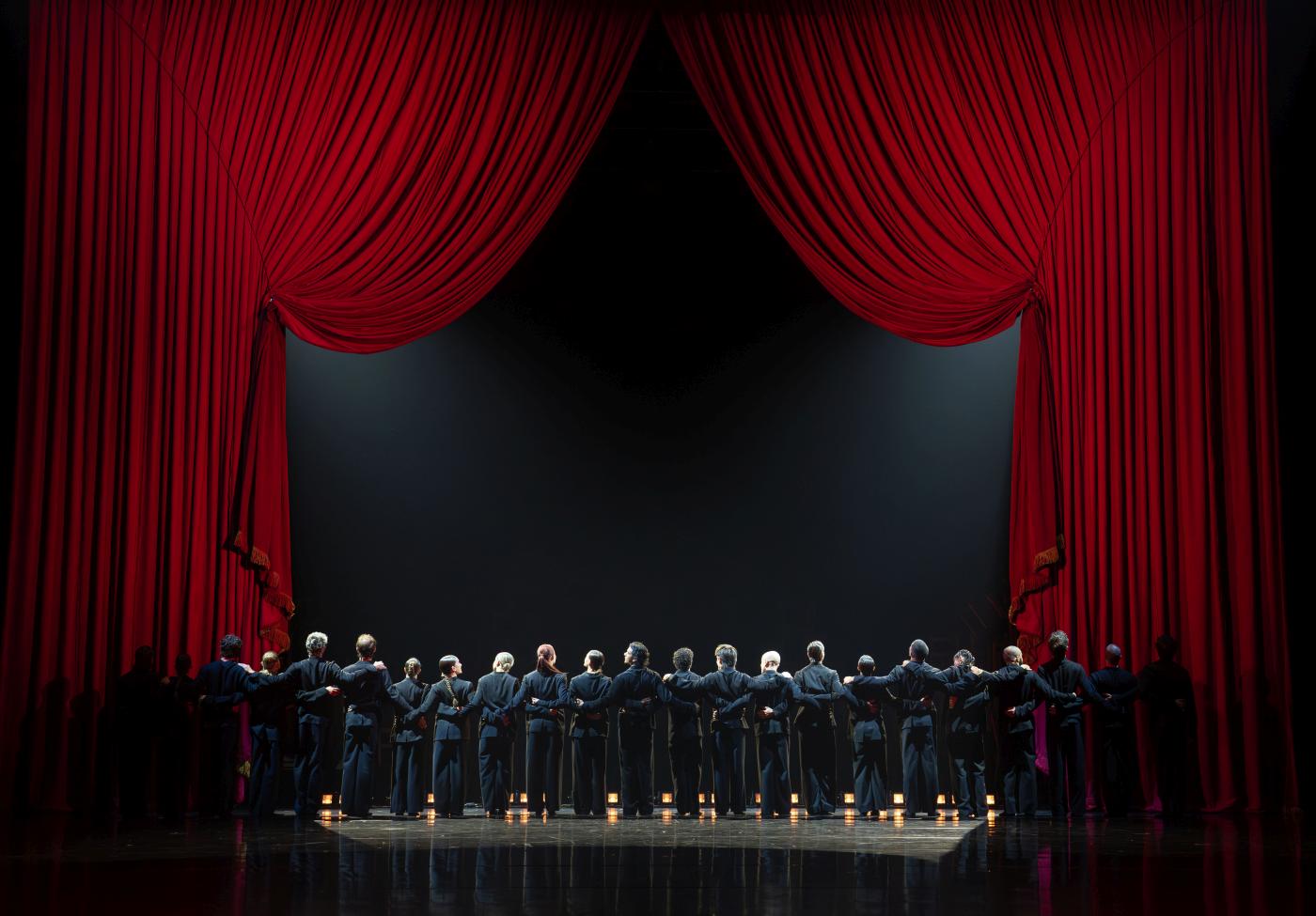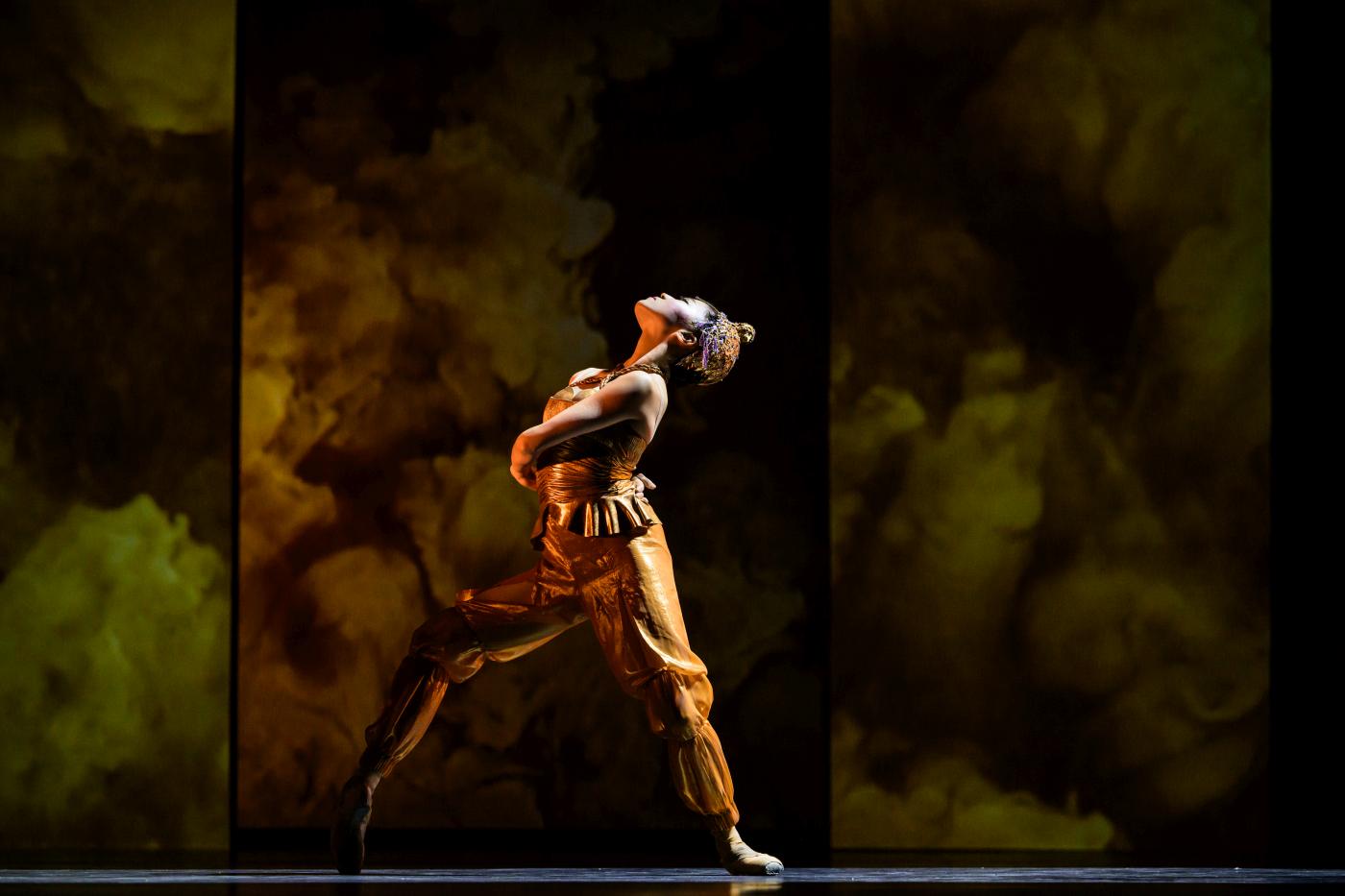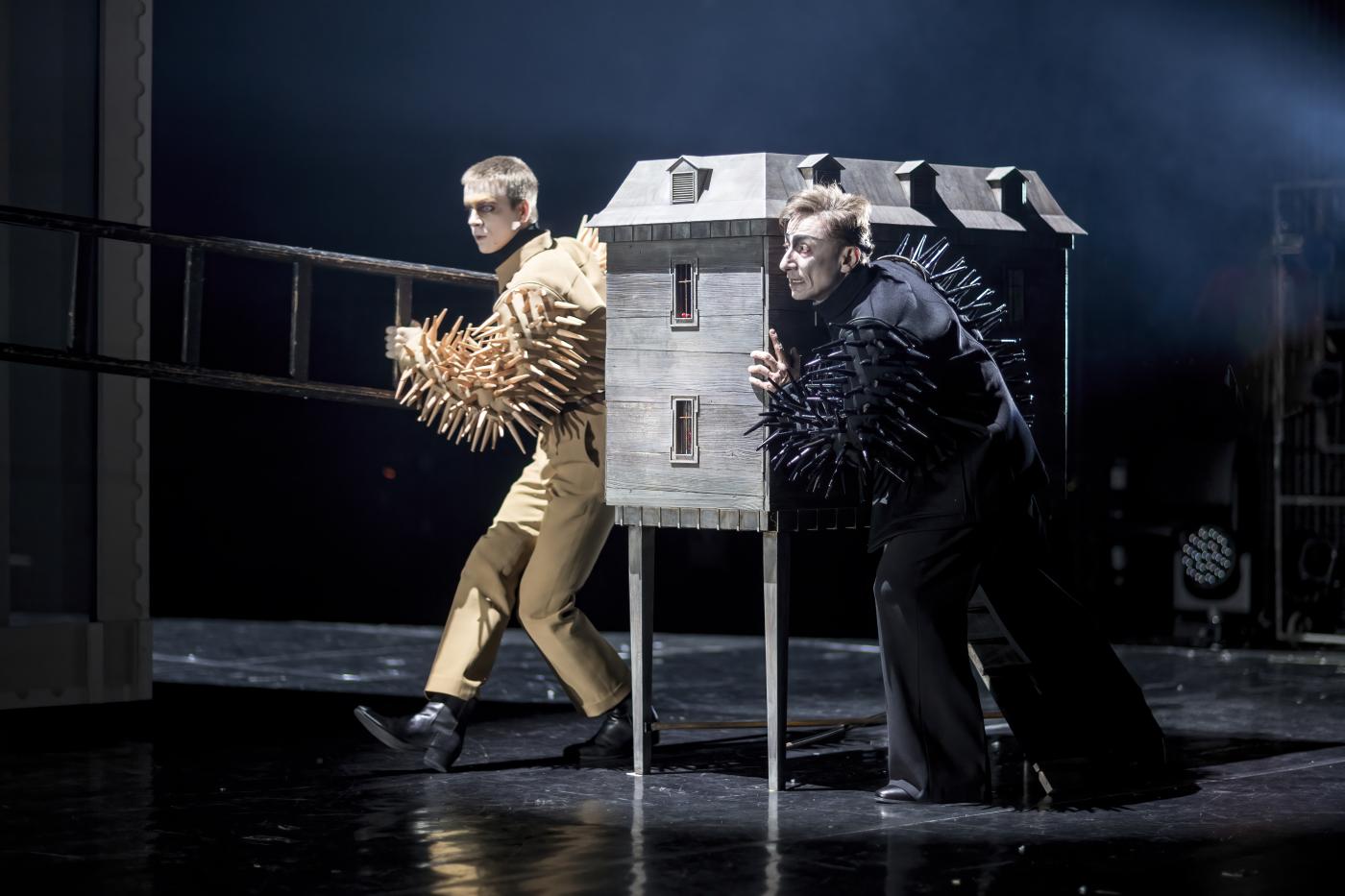“Marie Antoinette”
Vienna State Ballet & Volksoper Wien
Volksoper Wien
Vienna, Austria
December 20, 2025
by Ilona Landgraf
Copyright © 2025 by Ilona Landgraf
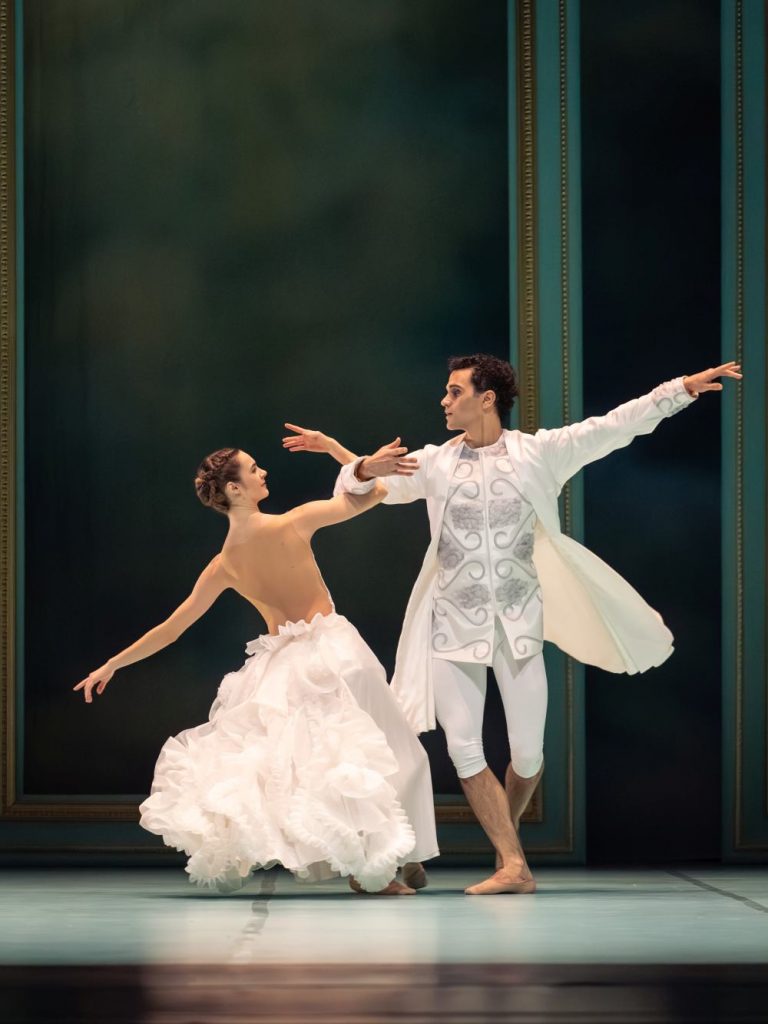
 Thierry Malandain’s Marie Antoinette was the Vienna State Ballet’s second premiere under Alessandra Ferri’s directorship. The one-act piece, created for the Malandain Ballet Biarritz, received its premiere in 2019 at the Palace of Versailles’s Opéra Royal. Its stage was inaugurated in 1770 during Marie Antoinette’s lavish wedding to Louis Auguste, heir to the throne.
Thierry Malandain’s Marie Antoinette was the Vienna State Ballet’s second premiere under Alessandra Ferri’s directorship. The one-act piece, created for the Malandain Ballet Biarritz, received its premiere in 2019 at the Palace of Versailles’s Opéra Royal. Its stage was inaugurated in 1770 during Marie Antoinette’s lavish wedding to Louis Auguste, heir to the throne.
Marie Antoinette follows the life of the then only fourteen-year-old Dauphine of France until her execution by guillotine in 1793. That’s twenty-three years of life (nineteen of which Marie Antoinette was Queen consort) to narrate. But Malandain tells little, and the ninety minutes of Marie Antoinette dragged on.
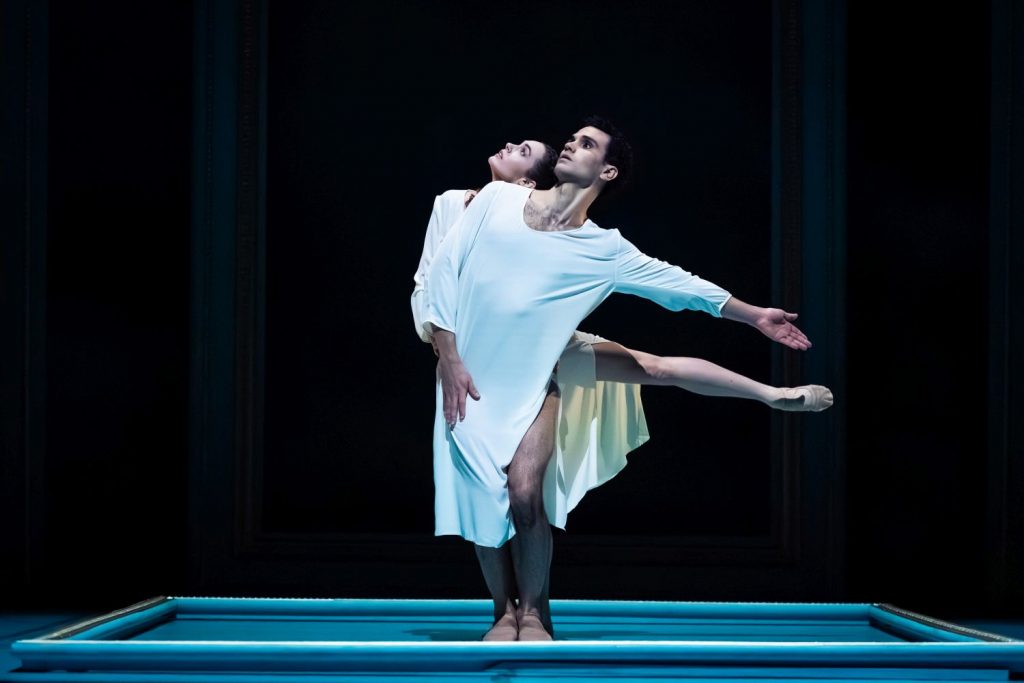 Malandain’s choreography was bland, repetitive, and cliché. Compared to the company’s latest premiere, Ratmansky’s Callirhoe, Malandain’s failure to characterize people through movement or comprehensibly convey a story was glaring. For example, who could understand what message the Austrian diplomat, Comte de Mercy-Argenteau (Gabriele Aime), delivered to Marie Antoinette (Elena Bottero) when they faced one another motionless? Why did the Comte and the Queen mother, Empress Maria Theresa (Rebecca Horner), kneel when Marie Antoinette lay on her back, circling the lower part of her stretched-up leg? Is that a cipher language only Malandain understands?
Malandain’s choreography was bland, repetitive, and cliché. Compared to the company’s latest premiere, Ratmansky’s Callirhoe, Malandain’s failure to characterize people through movement or comprehensibly convey a story was glaring. For example, who could understand what message the Austrian diplomat, Comte de Mercy-Argenteau (Gabriele Aime), delivered to Marie Antoinette (Elena Bottero) when they faced one another motionless? Why did the Comte and the Queen mother, Empress Maria Theresa (Rebecca Horner), kneel when Marie Antoinette lay on her back, circling the lower part of her stretched-up leg? Is that a cipher language only Malandain understands?
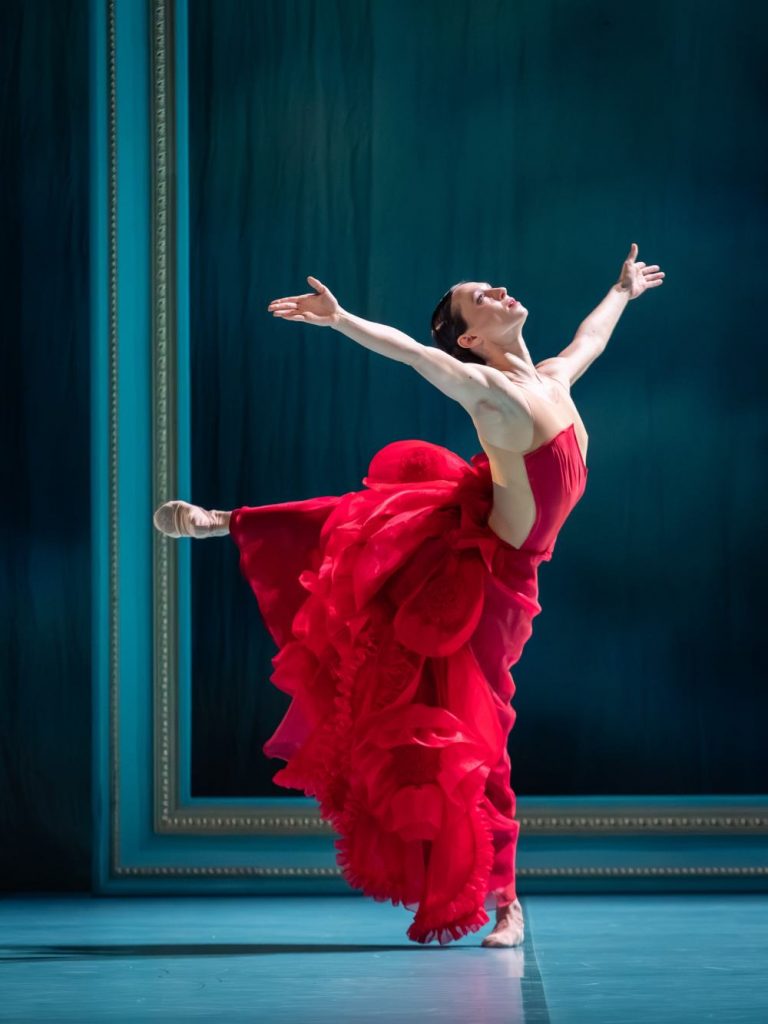
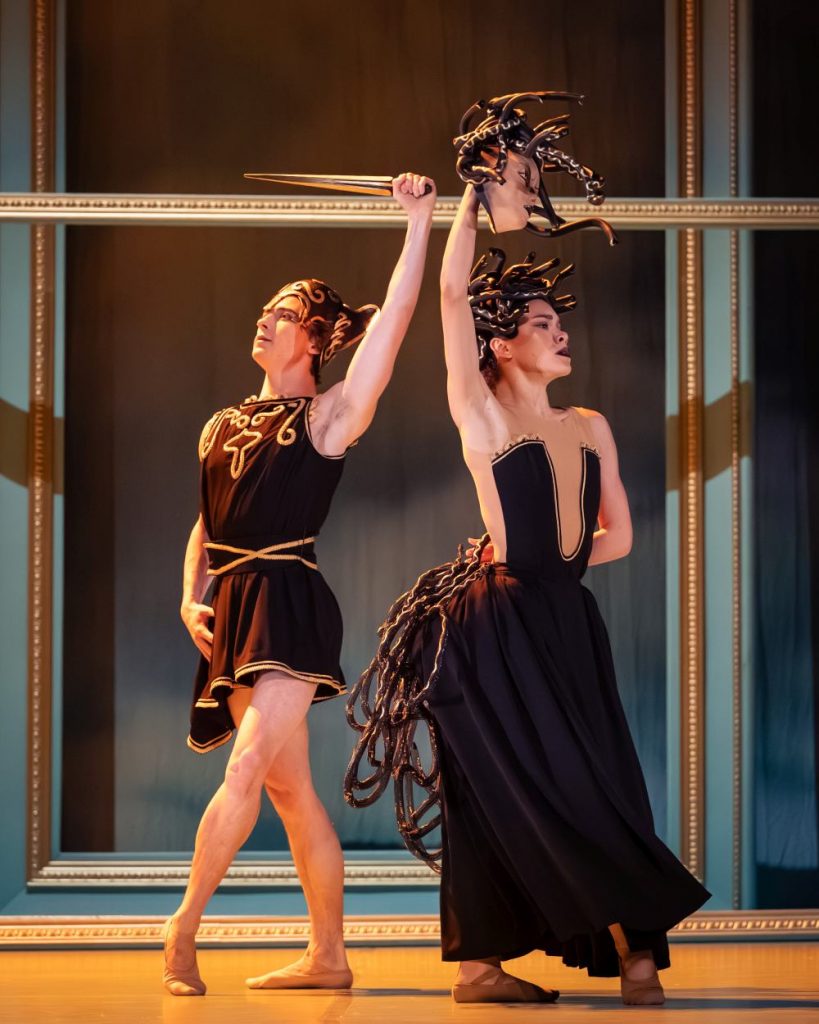 On other occasions, he was overly explicit. King Louis XV’s (the grandfather and predecessor of King Louis XVI, who became Marie Antoinette’s husband) affair with Comtesse du Barry was a series of stereotypes. Her bright red dress and craving demeanor unmistakably identified her as a mistress. Malandain omitted the fact that she proved a troublesome foe for Marie Antoinette. Instead, he created an extended pas de deux during which King Louis XV (László Benedek) crawled under the Comtesse’s (Mila Schmidt) skirt two times, at which point she crouched above his back, and both moved sideways. The pas de deux ended when both were caught in the act of intercourse on the floor. Shockingly vulgar was the moment when King Louis XVI (Andrés Garcia Torres) consummated his marriage by laying Marie Antoinette on the floor, lifting her skirt, kneeling between her legs, and thrusting his hips toward her.
On other occasions, he was overly explicit. King Louis XV’s (the grandfather and predecessor of King Louis XVI, who became Marie Antoinette’s husband) affair with Comtesse du Barry was a series of stereotypes. Her bright red dress and craving demeanor unmistakably identified her as a mistress. Malandain omitted the fact that she proved a troublesome foe for Marie Antoinette. Instead, he created an extended pas de deux during which King Louis XV (László Benedek) crawled under the Comtesse’s (Mila Schmidt) skirt two times, at which point she crouched above his back, and both moved sideways. The pas de deux ended when both were caught in the act of intercourse on the floor. Shockingly vulgar was the moment when King Louis XVI (Andrés Garcia Torres) consummated his marriage by laying Marie Antoinette on the floor, lifting her skirt, kneeling between her legs, and thrusting his hips toward her.
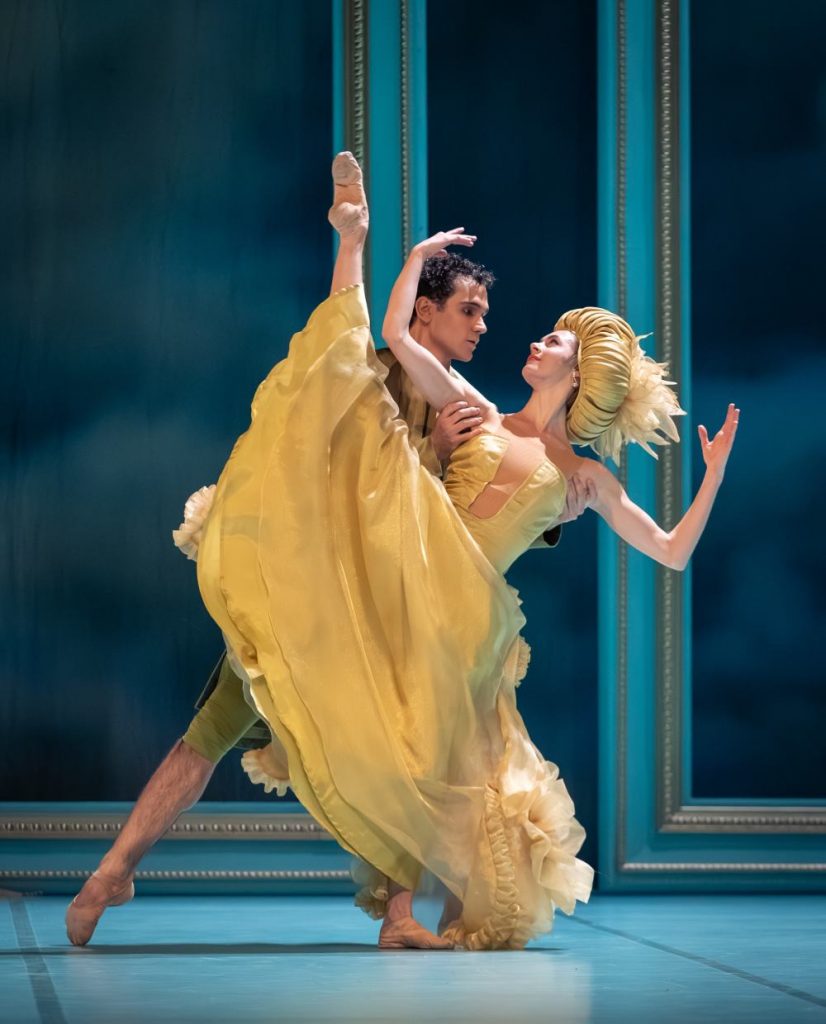
 Only painfully prolonged scenes filled the void of narrative creativity. For quite some time, the court society carried a huge rectangular frame (similar in size to those set designer, Jorge Gallardo, used to represent Versailles’s wall panels), over which they bowed and nodded like dutiful yes-men. The frame represented the confinement of royal etiquette, defined the borders of the aisle leading to the imaginary wedding altar, and marked the children’s playground on which the newlywed frolicked. It later turned into the frame of their marital bed and, later, once leaned against the backdrop, into the proscenium arch of the Opéra Royal, where a lengthy excerpt of Persée (Perseus, a 1682 tragédie lyrique that premiered at the Académie royale de musique, today’s
Only painfully prolonged scenes filled the void of narrative creativity. For quite some time, the court society carried a huge rectangular frame (similar in size to those set designer, Jorge Gallardo, used to represent Versailles’s wall panels), over which they bowed and nodded like dutiful yes-men. The frame represented the confinement of royal etiquette, defined the borders of the aisle leading to the imaginary wedding altar, and marked the children’s playground on which the newlywed frolicked. It later turned into the frame of their marital bed and, later, once leaned against the backdrop, into the proscenium arch of the Opéra Royal, where a lengthy excerpt of Persée (Perseus, a 1682 tragédie lyrique that premiered at the Académie royale de musique, today’s 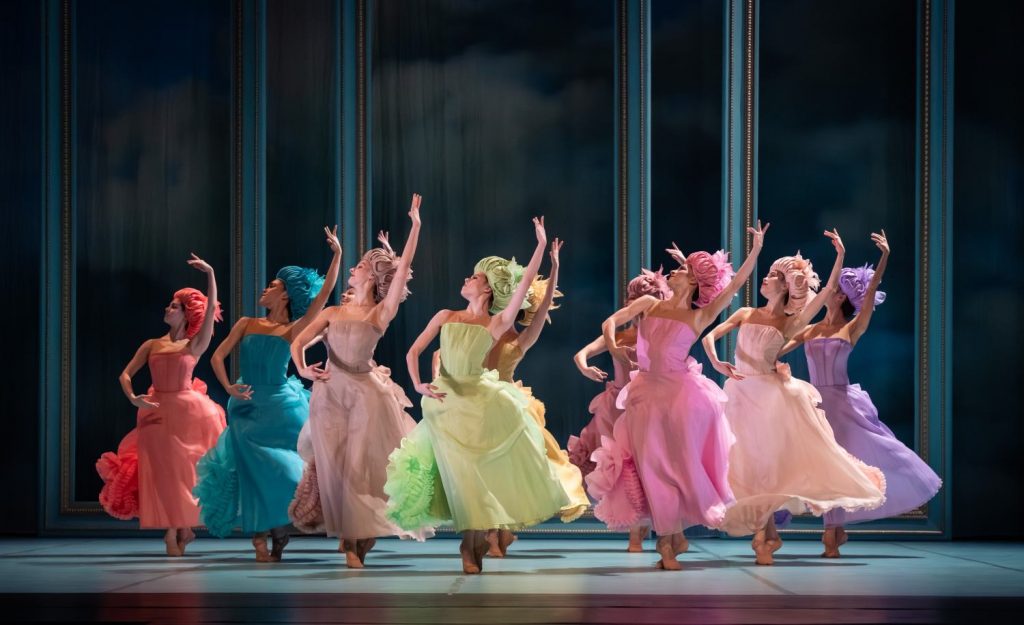 Opéra de Paris, and was revived at Versailles in the same year) was performed. Malandain’s Perseus included the hero, Perseus (Adrien Fougères), Medusa (Olivia Poropat), and three nymphs (Kristina Ermolenok, Una Zubović, and Tessa Magda) and culminated in the beheading of Medusa. According to the synopsis (which contained more information than the actual ballet), the sight of the cut-off head might have raised thoughts (or even apprehensions?) for Marie Antoinette, but I couldn’t spot her attending the performance.
Opéra de Paris, and was revived at Versailles in the same year) was performed. Malandain’s Perseus included the hero, Perseus (Adrien Fougères), Medusa (Olivia Poropat), and three nymphs (Kristina Ermolenok, Una Zubović, and Tessa Magda) and culminated in the beheading of Medusa. According to the synopsis (which contained more information than the actual ballet), the sight of the cut-off head might have raised thoughts (or even apprehensions?) for Marie Antoinette, but I couldn’t spot her attending the performance.
The scene that tried the audience’s patience most showed Empress Maria Theresa playing extensively with her first granddaughter (i.e., a wooden puppet). The parents, decoratively sitting on the floor as bystanders, then took the puppet, carried it around tenderly, and played “One, two, three, whee!” with it.
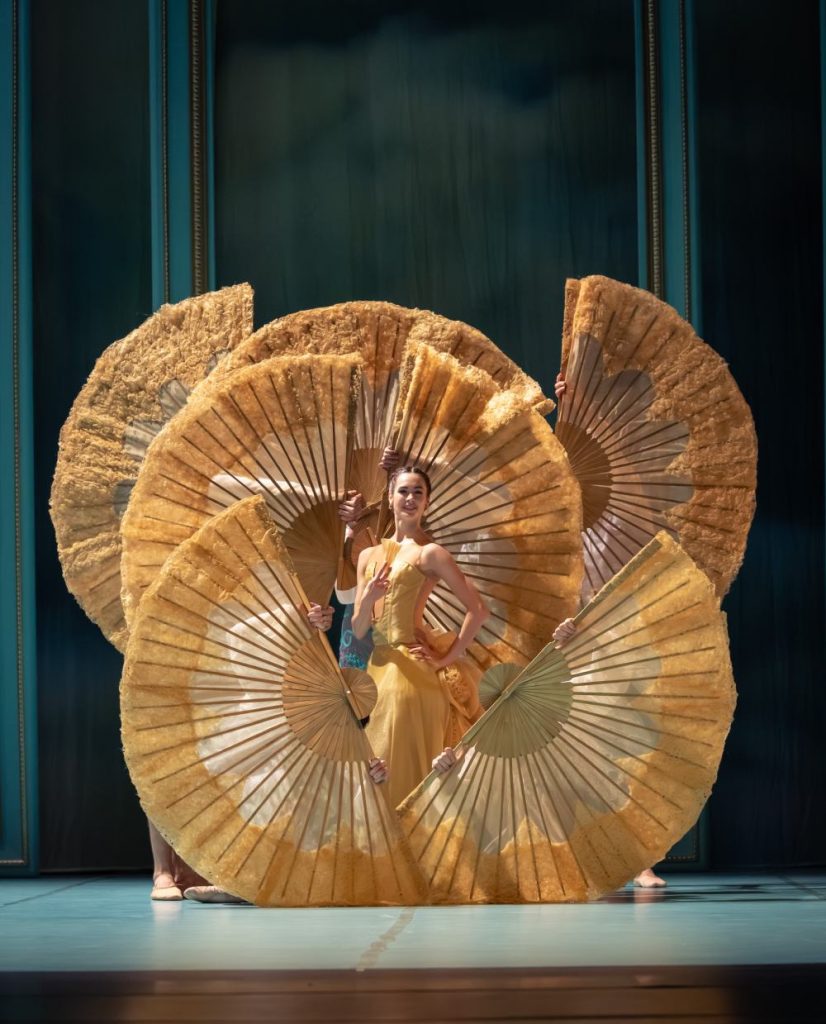
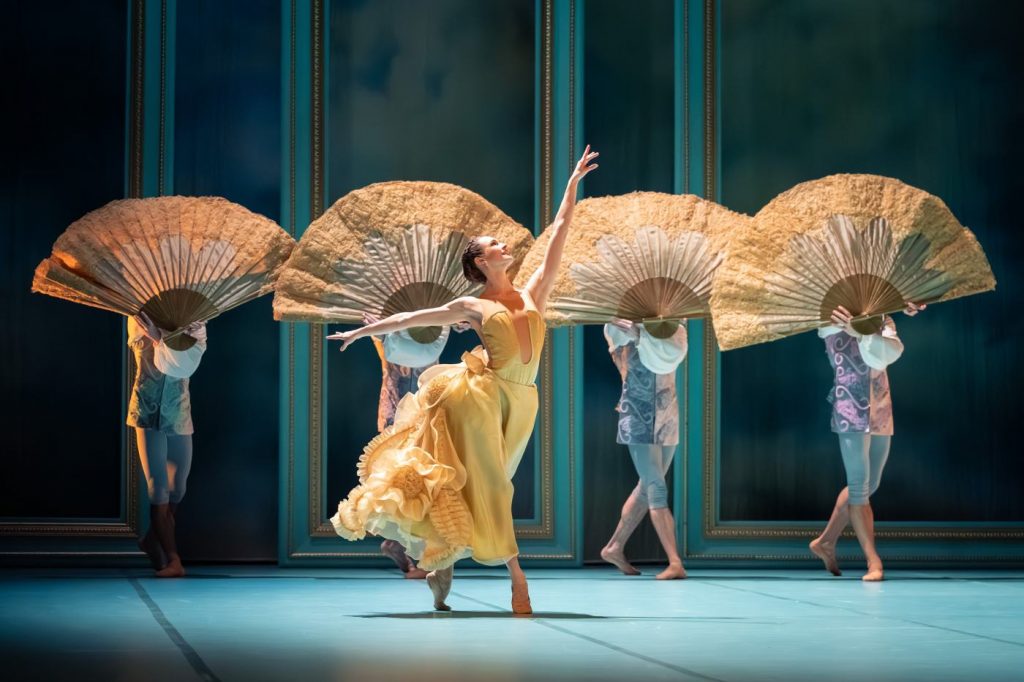 At that point, I wondered if Malandain intended to mock the audience or if Marie Antoinette actually represented his idea of theatrical art. It’s a shame that the company’s time and talent were wasted on such a piece.
At that point, I wondered if Malandain intended to mock the audience or if Marie Antoinette actually represented his idea of theatrical art. It’s a shame that the company’s time and talent were wasted on such a piece.
Jorge Gallardo’s costumes included hybrids between juste-au-corps and frock coats as well as corsage dresses decorated with voluptuous ruffles on the backs of the skirts. Except for the Queen Mother’s, all dresses were low-cut or, in the case of Comtesse du Barry, exposed one breast like an Amazon.
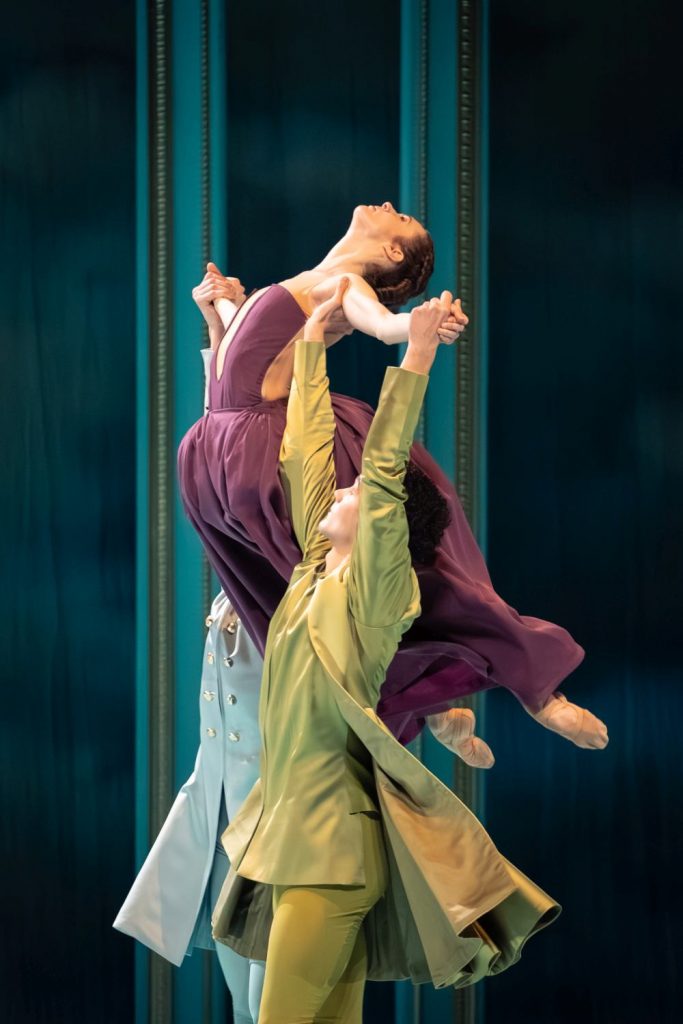
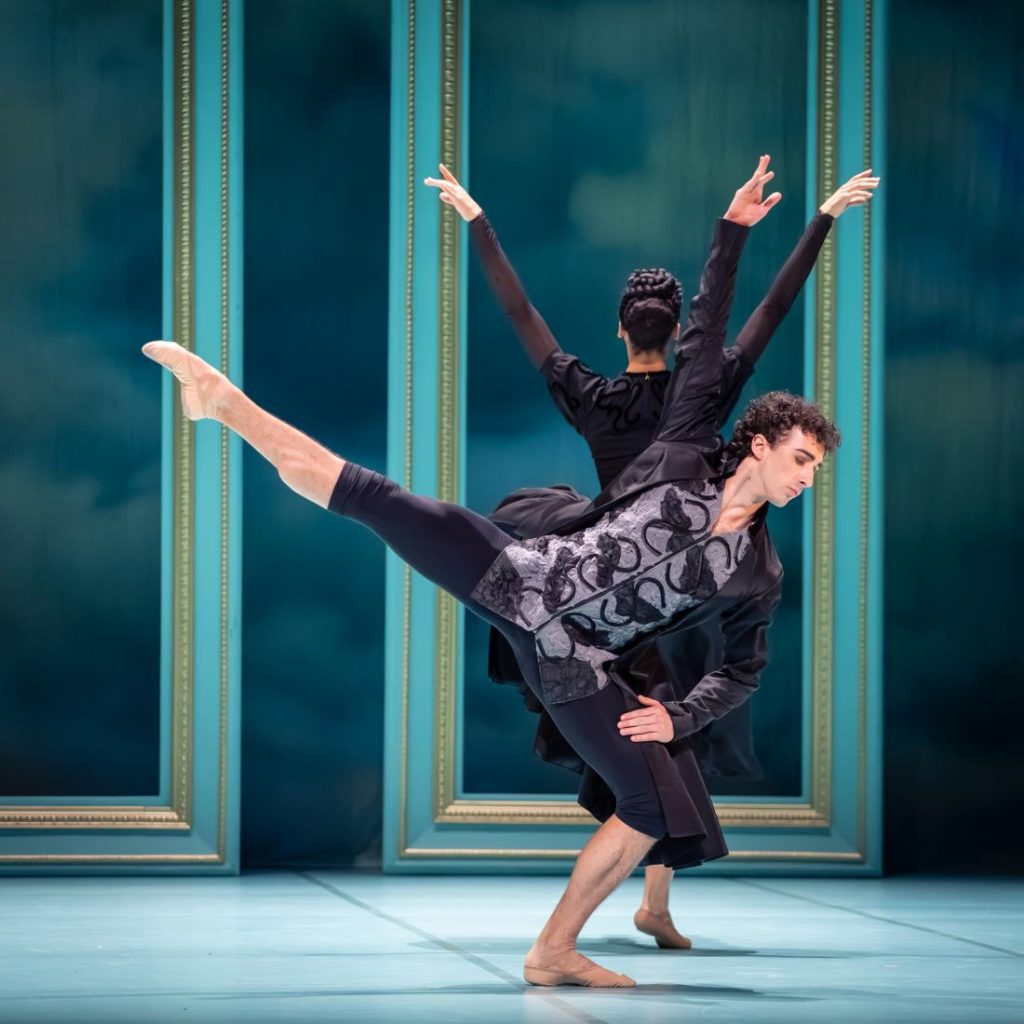
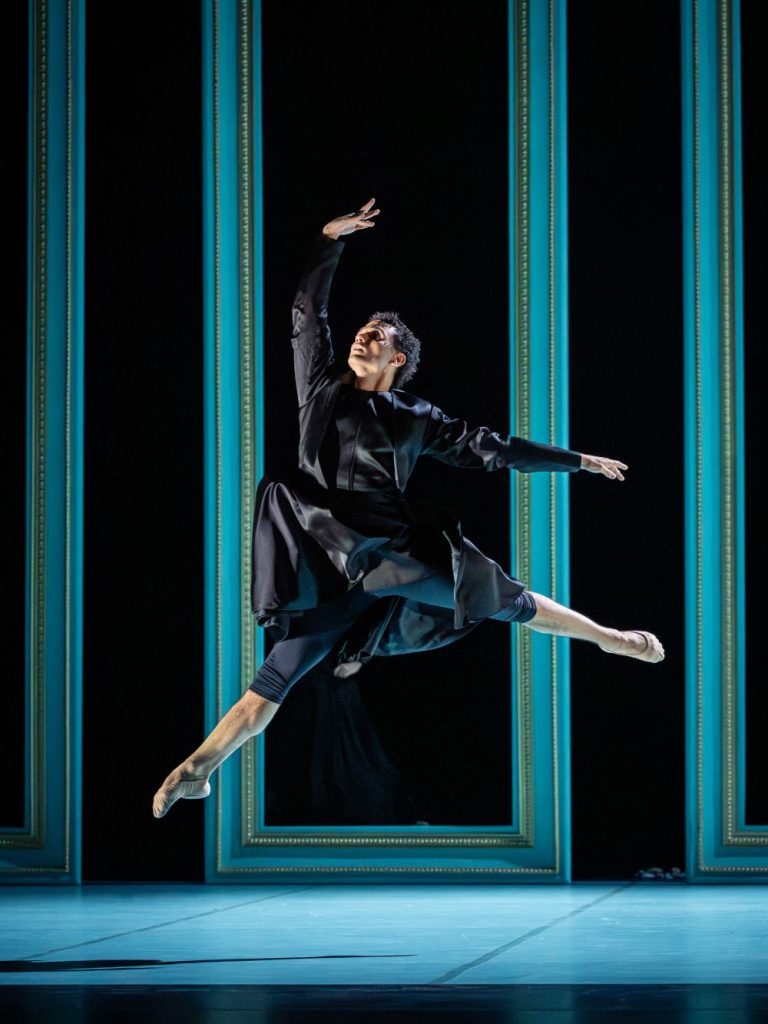 In the first scenes, Marie Antoinette and Louis XVI wore the same white garb as their court, making them often indistinguishable from the group. Huge golden fans and a golden dress testified to Marie Antoinette’s passion for grandeur; her ladies-in-waiting wore candy-colored dresses of the same cut. Their matching headdresses looked like tussocks with a tied top. For the pastimes at Hameau de la Reine, Marie Antoinette’s rustic retreat at the park of Versailles, decorative sheep were lined up at the front stage.
In the first scenes, Marie Antoinette and Louis XVI wore the same white garb as their court, making them often indistinguishable from the group. Huge golden fans and a golden dress testified to Marie Antoinette’s passion for grandeur; her ladies-in-waiting wore candy-colored dresses of the same cut. Their matching headdresses looked like tussocks with a tied top. For the pastimes at Hameau de la Reine, Marie Antoinette’s rustic retreat at the park of Versailles, decorative sheep were lined up at the front stage.
Marie Antoinette features music by Haydn and Gluck, which was staid and dignified according to courtly custom. Conductor Christoph Altstaedt and the Volksoper Wien’s orchestra played with their usual aplomb.
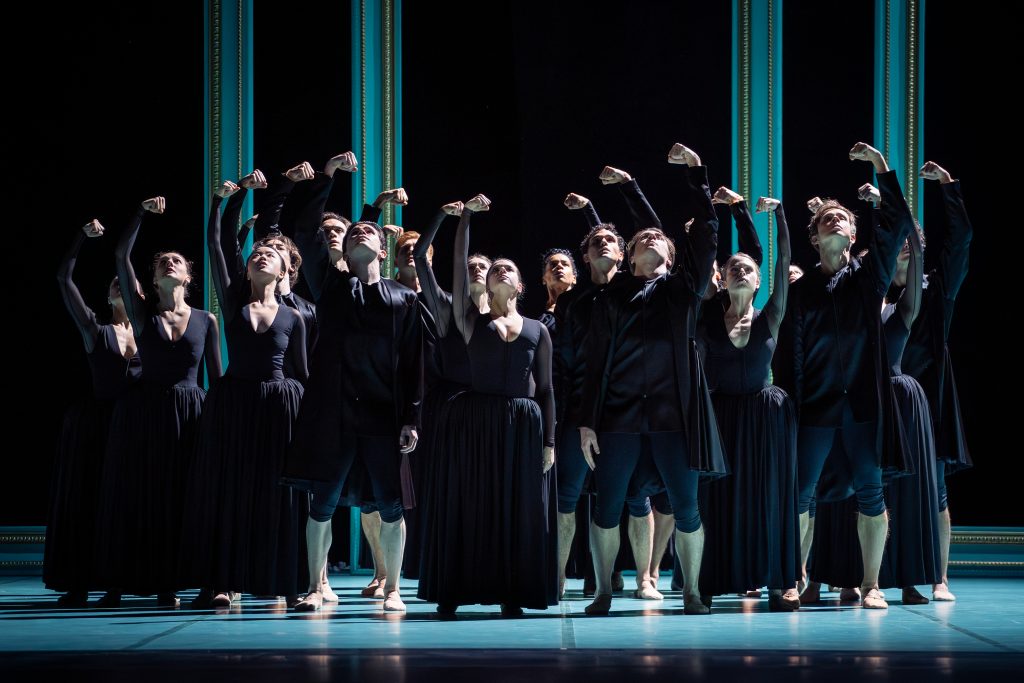
| Links: | Website of the Vienna State Ballet | |
| Website of the Volksoper Wien | ||
| Marie Antoinette—Trailer | ||
| Marie Antoinette—Teaser | ||
| Marie Antoinette—Rehearsal | ||
| Photos: | 1. | Elena Bottero (Marie Antoinette) and Andrés Garcia Torres (Ludwig XVI), “Marie Antoinette” by Thierry Malandain, Vienna State Ballet 2025 |
| 2. | Rebecca Horner (Queen Mother), “Marie Antoinette” by Thierry Malandain, Vienna State Ballet 2025 | |
| 3. | Elena Bottero (Marie Antoinette) and Andrés Garcia Torres (Ludwig XVI), “Marie Antoinette” by Thierry Malandain, Vienna State Ballet 2025 | |
| 4. | Mila Schmidt (Comtesse du Barry), “Marie Antoinette” by Thierry Malandain, Vienna State Ballet 2025 | |
| 5. | Adrien Fougères (Perseus) and Olivia Poropat (Medusa), “Marie Antoinette” by Thierry Malandain, Vienna State Ballet 2025 |
|
| 6. | Aleksandar Orlić (Axel von Fersen), “Marie Antoinette” by Thierry Malandain, Vienna State Ballet 2025 |
|
| 7. | Elena Bottero (Marie Antoinette) and Andrés Garcia Torres (Ludwig XVI), “Marie Antoinette” by Thierry Malandain, Vienna State Ballet 2025 | |
| 8. | Ensemble, “Marie Antoinette” by Thierry Malandain, Vienna State Ballet 2025 | |
| 9. | Elena Bottero (Marie Antoinette) and ensemble, “Marie Antoinette” by Thierry Malandain, Vienna State Ballet 2025 | |
| 10. | Elena Bottero (Marie Antoinette) and ensemble, “Marie Antoinette” by Thierry Malandain, Vienna State Ballet 2025 | |
| 11. | Andrés Garcia Torres (Ludwig XVI), Elena Bottero (Marie Antoinette), and Aleksandar Orlić (Axel von Fersen); “Marie Antoinette” by Thierry Malandain, Vienna State Ballet 2025 | |
| 12. | Gabriele Aime (Comte de Mercy-Argenteau) and Rebecca Horner (Queen Mother), “Marie Antoinette” by Thierry Malandain, Vienna State Ballet 2025 | |
| 13. | Andrés Garcia Torres (Ludwig XVI), “Marie Antoinette” by Thierry Malandain, Vienna State Ballet 2025 |
|
| 14. | Ensemble, “Marie Antoinette” by Thierry Malandain, Vienna State Ballet 2025 |
|
| all photos © Vienna State Ballet/Ashley Taylor | ||
| Editing: | Kayla Kauffman |
